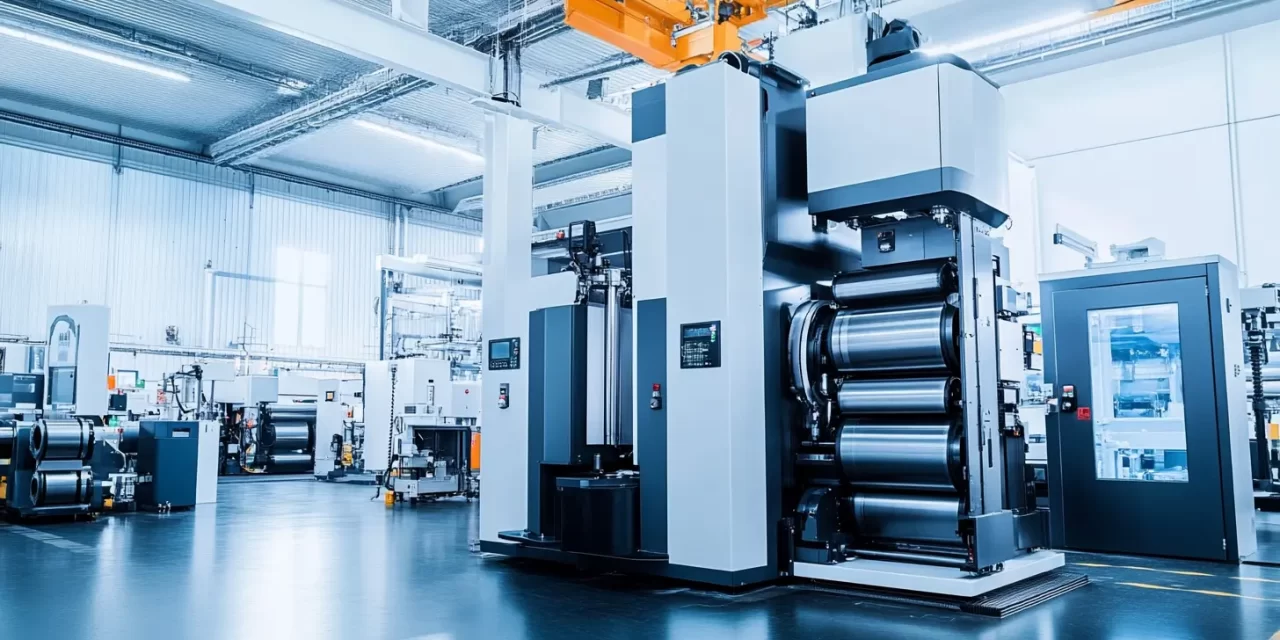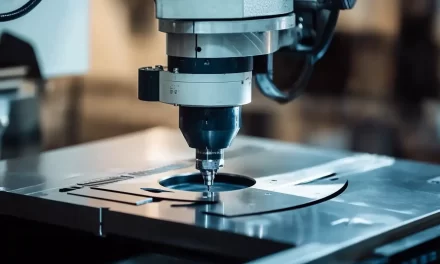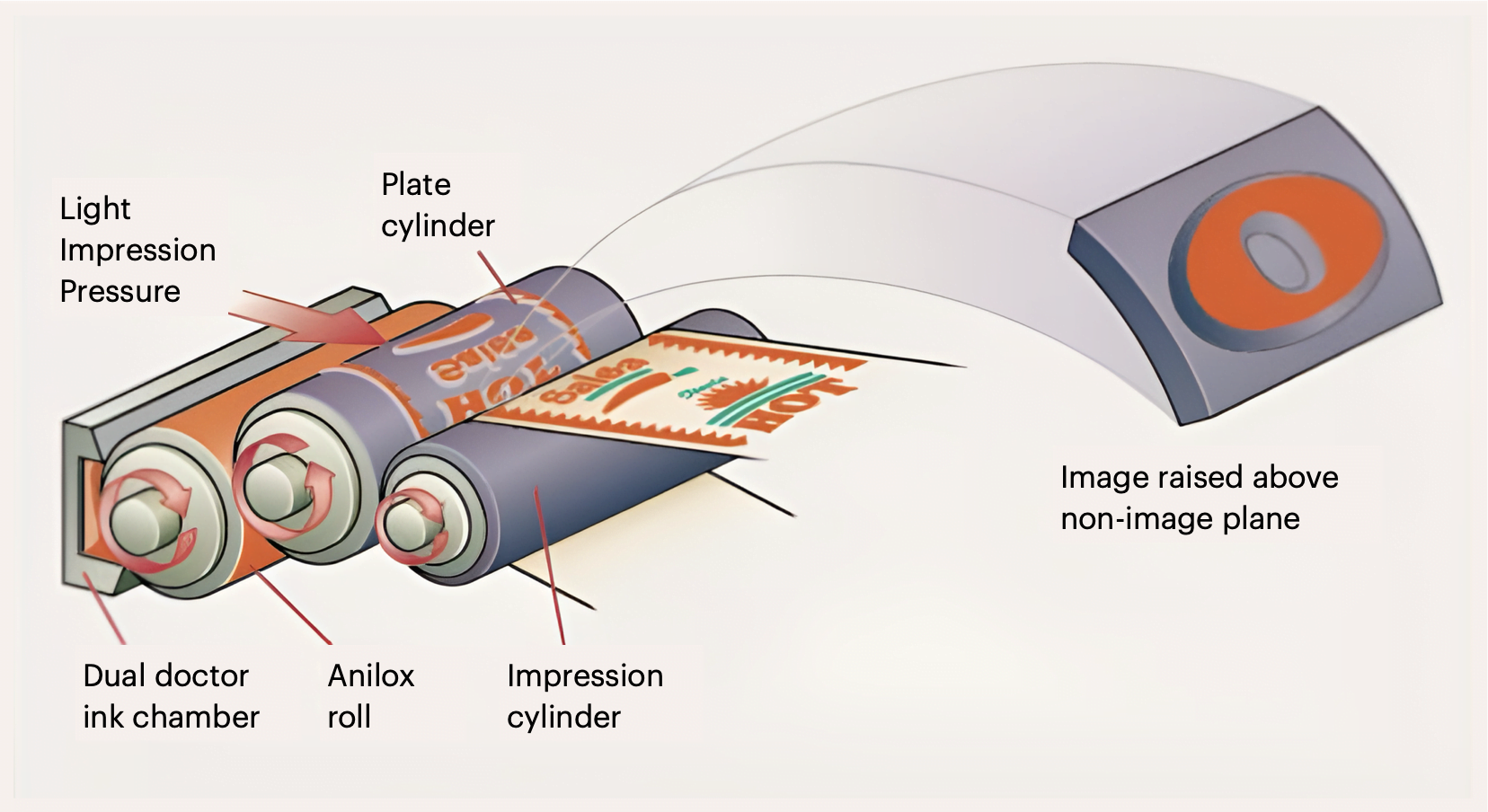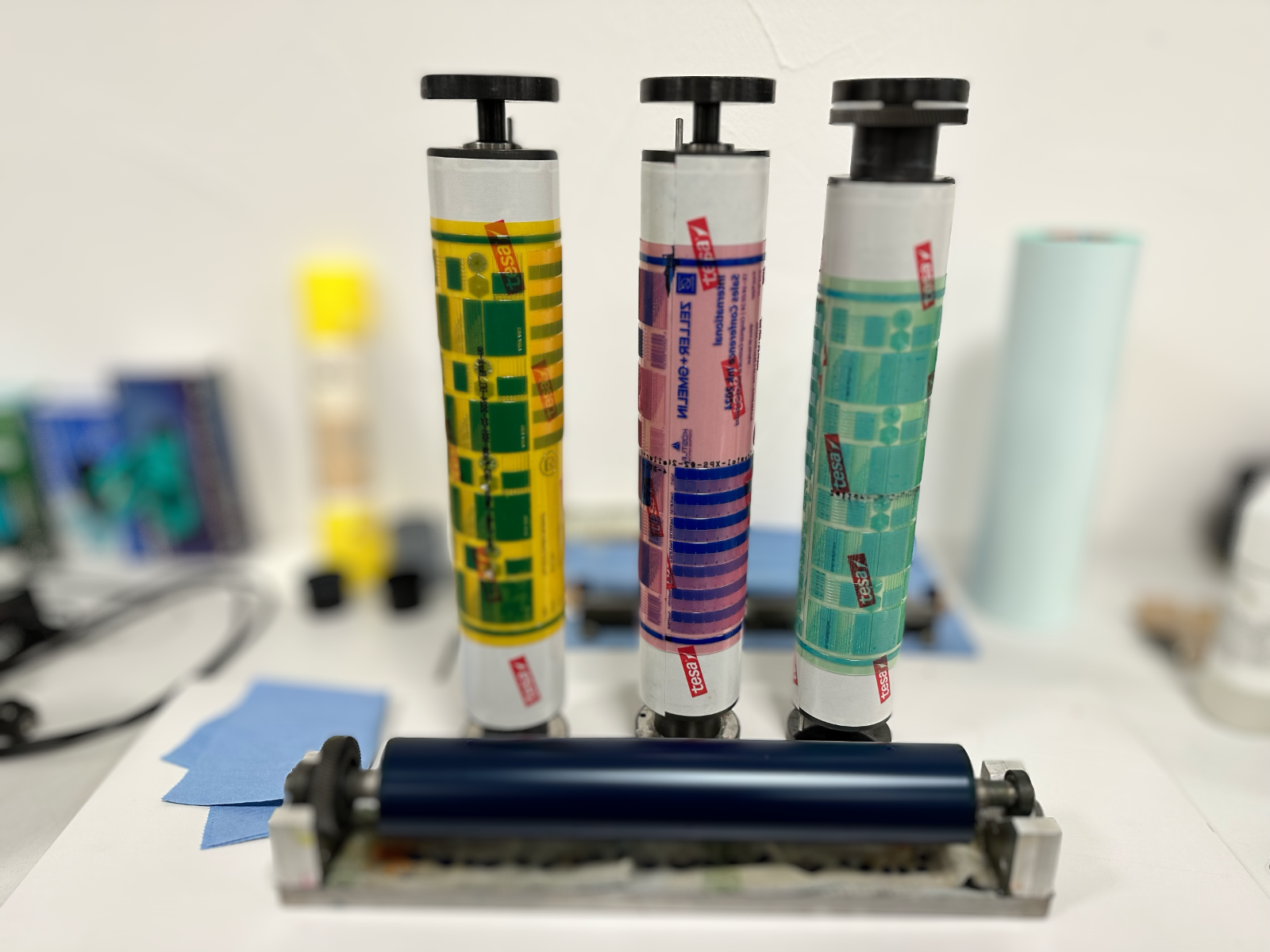In the world of flexographic printing, where precision, speed, and versatility are critical, central impression cylinder (CIC) systems have emerged as a game-changing technology. The CIC system stands out among the various press configurations for its unique approach to substrate handling and color registration, making it an ideal solution for high-quality, multi-color printing applications.
From flexible packaging to labels, CIC systems have proven indispensable in industries that demand perfect alignment and color accuracy across multiple substrates. This article explores the mechanics, benefits, and applications of CIC systems in flexography, helping you understand why these presses are often the go-to solution for advanced printing needs.
What is a Central Impression Cylinder (CIC) System?
The Central Impression Cylinder (CIC), also known as a central drum system, is one of the most commonly used configurations in flexographic printing. In a CIC system, all the printing stations—typically four to eight—are arranged around a single large central cylinder. The substrate (such as paper, plastic, or film) is wrapped tightly around this cylinder as it moves through the various color stations.
This design differs from other types of flexo presses, such as stack presses, where each color station has its own impression cylinder. The central cylinder serves as the substrate’s support system throughout the printing process, ensuring excellent registration between colors and reducing the potential for movement or distortion.
Key Features of Central Impression Cylinder Systems
Several unique features set CIC systems apart from other flexographic presses:
1. Central Drum Design:
The defining characteristic of CIC presses is the large central impression cylinder that supports the substrate throughout the entire printing process. This single, large drum ensures that the substrate remains in place while passing through each color station, minimizing stretching or shifting.
2. Superior Color Registration:
Since the substrate stays in continuous contact with the central drum, it experiences less movement or bouncing, resulting in near-perfect color registration. This feature makes CIC systems ideal for multi-color and intricate designs that require exact alignment.
3. Versatility in Substrates:
CIC presses can handle a wide range of substrates, from flexible films to rigid materials like paperboard. The stability provided by the central cylinder allows for consistent pressure across various materials, making it suitable for packaging, labels, and other products that require precise printing.
4. High-Speed Operation:
CIC systems are designed for high-speed operation while maintaining print quality. The continuous substrate support allows for faster runs without sacrificing accuracy, making CIC presses ideal for long production runs and high-output demands.
5. Multiple Print Stations:
CIC presses can typically accommodate four to eight print stations, allowing for complex color printing in a single pass. This is especially useful for packaging that requires vibrant, detailed designs or for products with high visual standards.
Advantages of Central Impression Cylinder Systems in Flexography
CIC systems offer several advantages that make them particularly valuable in the flexographic printing industry:
1. Exceptional Print Stability
The central drum’s design ensures that the substrate remains stable throughout the printing process. This stability minimizes issues such as distortion, wrinkling, or substrate stretching, which can negatively impact print quality. The result is sharp, precise prints with consistent quality from the first unit to the last.
2. Enhanced Color Registration
One of the standout features of CIC presses is their ability to maintain impeccable color registration. Since the substrate doesn’t leave the drum between print stations, the risk of misalignment is significantly reduced. This makes CIC presses ideal for printing jobs that require multiple colors and intricate designs, where registration precision is critical.
3. Faster Production with High Accuracy
CIC presses are known for their ability to run at high speeds while maintaining superior accuracy. The stability provided by the central drum allows operators to increase throughput without compromising on quality. This makes CIC presses a popular choice for long print runs, where efficiency and consistency are essential.
4. Versatility Across Materials
Whether you’re printing on film, paper, foil, or even laminated materials, CIC systems offer the versatility needed to handle a wide range of substrates. This flexibility is particularly valuable for businesses that produce a variety of packaging types or switch between materials frequently.
5. Reduced Waste and Downtime
The precision of CIC presses leads to reduced material waste. Fewer errors in color registration or print alignment mean fewer rejected units. Additionally, CIC systems are designed for easy setup and operation, reducing the downtime associated with press adjustments or color changes.
Common Applications of Central Impression Cylinder Systems
CIC systems are widely used across industries that require high-quality flexographic printing. Some of the most common applications include:
1. Flexible Packaging:
Flexible packaging, such as food wrappers, pouches, and bags, often requires multi-color printing on flexible substrates. CIC presses are ideal for this application due to their superior registration and ability to handle films and flexible materials with ease.
2. Labels and Tags:
Labels, whether for consumer goods, pharmaceuticals, or industrial products, demand high-quality printing with precise alignment. CIC presses deliver the accuracy needed for fine details, making them a preferred choice for label production. However, in tags and labels typically inline presses are used as the substrate width in most cases narrow and the print volumes are lower, therefore the more economic inline press is the preferred choice.
3. Shrink Sleeves and Wraps:
Shrink sleeves and wraps are commonly used in packaging, especially for beverages and personal care products. These materials require flexible printing solutions that ensure design precision, even when the packaging is stretched or distorted during application. CIC systems excel in this area due to their stable substrate handling.
4. Corrugated Packaging:
While CIC systems are primarily known for their work with flexible materials, they can also handle more rigid substrates like corrugated paper and cardboard. This versatility makes CIC presses a great option for printing on various types of packaging materials.
5. Specialty Printed Materials:
In industries such as healthcare, electronics, and cosmetics, products often require specialized packaging that needs precise printing. CIC presses allow for the customization of substrates with complex designs, metallic inks, or specialized finishes, ensuring that branding and regulatory information are clearly and accurately displayed.
How to Choose the Right Central Impression Cylinder System
Investing in a CIC system is a significant decision for any flexographic printing business. Here are some factors to consider when selecting the right system:
1. Substrate Compatibility
Different CIC presses are optimized for different substrates. Ensure that the system you choose can handle the materials you most commonly work with, whether that’s films, foils, or rigid packaging materials.
2. Number of Print Stations
The complexity of the designs you print will determine how many print stations you need. For jobs that require multiple spot colours or intricate designs, opting for a CIC press with more print stations is a good idea. Typically 8 to 10 colours are the choice.
3. Print Speed and Volume
If your business handles large volumes of printing, it’s essential to select a CIC press that can meet high-speed production demands without compromising print quality. High-speed CIC presses are ideal for long runs, but you’ll need to ensure that the speed matches your volume requirements.
4. Maintenance and Operator Training
While CIC presses are relatively easy to maintain, it’s important to evaluate the ease of operation and the availability of training for your operators. Choosing a system that is user-friendly and offers accessible training resources will improve your production efficiency.
5. Budget and Long-Term ROI
CIC systems represent a significant investment, so it’s important to consider both the upfront cost and the long-term return on investment. The efficiencies gained in color registration, reduced waste, and faster production speeds often outweigh the initial costs.
Conclusion
The Central Impression Cylinder (CIC) system has become a cornerstone in the flexographic printing industry, offering unparalleled precision, speed, and versatility. Its design, centered around a large central drum, provides unmatched stability for substrates, ensuring that even complex, multi-color designs are printed with perfect alignment and clarity.
Whether your business is focused on flexible packaging, labels, or specialty printed products, a CIC system can elevate your production quality and efficiency. As the demand for high-quality packaging continues to rise, investing in a CIC press is a step toward meeting and exceeding industry standards.
FAQs
What is a Central Impression Cylinder (CIC) system in flexography?
A CIC system is a type of flexographic press where the substrate is wrapped around a large central drum that holds it in place while passing through multiple color stations, ensuring excellent color registration and stability.
How does a CIC system differ from other flexographic press types?
The key difference is that in CIC systems, all color stations are arranged around a single central cylinder, which supports the substrate throughout the printing process. This differs from stack or inline presses, where each color station has its own impression cylinder.
What types of substrates can be printed using CIC systems?
CIC systems are versatile and can print on a wide range of substrates, including films, papers, foils, flexible packaging materials, and even rigid substrates like corrugated board.
What are the advantages of using a CIC press for multi-color printing?
The central drum ensures perfect color registration and substrate stability, making CIC presses ideal for multi-color jobs. They also allow for faster print speeds and reduced waste, which is advantageous for long runs.
Is a CIC press suitable for high-volume printing?
Yes, CIC presses are designed for high-speed, high-volume printing while maintaining print quality. Their stability and precision make them ideal for large production runs.
How does a CIC system improve print quality?
By keeping the substrate in continuous contact with the central drum throughout the printing process, CIC systems minimize distortion and movement, resulting in sharper, more accurate prints with better color registration.



![[Flexo Flaw Fixing] Dirty Print](https://flexopedia.net/wp-content/uploads/2022/08/dirty_print.jpeg)


